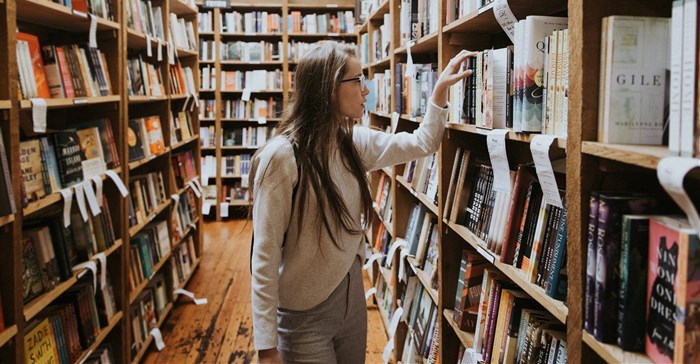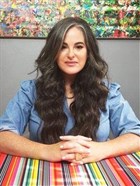How book publishing is changing in the age of digital

But is publishing dying? Is the bookshop morphing into the bookshelf – where a mere handful of readable books jostle for space with leather-bound notebooks, mandala calendars, adult colouring books and wrapping paper?
Three distinct challenges
It appears that there are three distinct challenges to traditional publishing:
- The growth of independent/self-publishing
- The emergence of digital and e-books
- Bookshop closure, down-sizing and rationalising
Why traditional publishing only? Because the cost of producing a book is within reach of nearly every aspiring author – now that digital technology has democratised book production.
In fact, according to Bowker’s Global Books in Print (2019), 700,000 new titles appeared in 1998; 859,000 in 2003; 976,000 in 2007; and over one million in 2017.
That’s right: Over one million new books are being published every year.
Independent and self-publishing
Could it be, asks Diggs (2017), that self-publishing will mean the death of traditional publishers? Maybe. But maybe it’ll make them different and better.
In the ‘old days’ of print books, publishers played a valuable economic role because they converted typewritten manuscripts into actual books and got them onto the shelves of distributors and retailers.
But today, transforming a writer's words into a more-or-less readable book can often be done with a combination of software and minimal training.
Granted, says Max (2016), there’s no monetary advance before publishing, there’s less potential for traditional media coverage and there’s less prestige.
But the ‘indie’ authors enjoy greater ownership, more marketing control, more creative and content control, a far quicker journey from manuscript to finished product, instant delivery in many cases and a significant financial upside.
Digital and e-books
Hark, the decreasing need to print and distribute physical books in the first place – which dramatically changes the publishing equation.
According to Wasserman (2010), “millions are buying the modern Aladdin lamps called e-readers, those magical devices, ever more beautiful and nimble in their design, which only have to be lightly rubbed, or have a hand passed over them like a wand, for the genie of literature to be summoned.”
The latest evolution of the industry’s business and distribution model, unmistakeably rooted in the quest to stay relevant, is why we have such a dizzying variety of choice in e-book pricing and digital delivery.
It’s also why internal processes and managerial focus have had to shift in response to the new industry structure and consumer behaviour.
Take JK Rowling, who made millions of pounds using the traditional route and then bypassed both publishers and retailers and made further millions of pounds by taking full control of the e-book and audiobook rights for the Harry Potter franchise Pottermore Presents (Alter, 2016, in Phalen & Harris, 2017).
And don’t forget audio – another big beneficiary of digital downloading.
Bye-bye, bookshop?
“Like other sacred meeting places, bookstores are essential artefacts of human nature. The feel of a book taken from the shelf and held in the hand is a magical experience, linking writer to reader,” says Jason Epstein (2001), Random House editor and co-founder of The New York Review of Books.
So is this the end of the bookshop – or just a new chapter?
In South Africa, certainly, there’s a shift.
Corina van der Spoel (in Pampalone, 2012) says: “Things are changing. It’s about fashion now. The Moleskine is the accoutrement.” She ran Boekehuis until it closed its doors after 12 years in 2012.
Kate Rogan of Melville’s Love Books says she too watches her customers “come in, look at stuff and weigh it up, figuring out what they will buy and what they will download” (in Pampalone, 2012).
This ties in with Wasserman’s assertion that “(b)ookstores have lost their mojo” (2010).
Sloman (in Pampalone, 2012) disagrees: “The past five years have been a boon for local publishing. There are so many good books being published. It’s a wonderful time to be a part of the book trade.”
He issues a caveat, though: “You have to take responsibility for what you are doing. If anybody thinks they can find a space, fill it with books and wait for people to stream in, they are not going to last. But if you (can) be creative and innovative, it is doable.”
Looking to the bigger bookshops, Exclusive Books stores were entirely revamped beginning in 2013 and the brand has been credited for “revitalising SA’s book-selling industry” since then.
In 2017, the Hyde Park store – which includes the upmarket EB Social Kitchen & Bar – was shortlisted for international Bookstore of the Year at the London Book Fair.
So, here’s my thinking...
Maybe it’s not the end of the bookshop but rather the growth of the niche, the independent, the curated. Maybe it’s a blend of old and new with something we can’t clearly see just yet; a more agile, intelligent, effective book publishing industry, instead of the demise of the book publishing function itself.


























